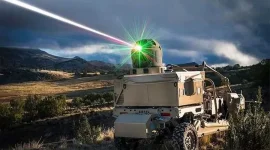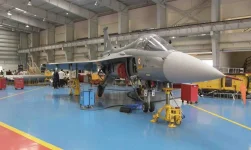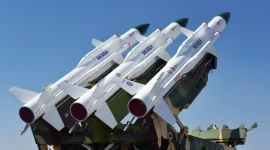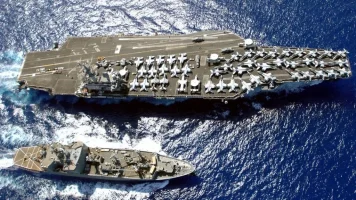- Views: 3K
- Replies: 12
India's Defence Research and Development Organisation (DRDO) is advancing its indigenous capabilities in armoured vehicle technology. A key project is the DATRAN-1500 HP engine, currently developed for the country's upcoming Futuristic Main Battle Tank (FMBT) and the upgraded Arjun Mk1A Main Battle Tank (MBT). This engine marks a significant step towards self-sufficiency in critical defence systems.
DRDO officials recently shared plans indicating that the DATRAN engine platform is designed for future growth. Leveraging a modular construction approach, the organisation aims to create more powerful versions based on the current DATRAN core technology, allowing power output to be scaled up as needed for future requirements.
Developed by DRDO’s Chennai-based Combat Vehicles Research and Development Establishment (CVRDE) in partnership with industry players like Bharat Earth Movers Limited (BEML), the DATRAN-1500 HP engine is hailed as a major achievement in India's drive for self-reliance in defence manufacturing. This indigenous development reduces dependency on foreign suppliers for crucial tank components.
A standout feature of the DATRAN engine is its modular architecture. Officials emphasize this design choice as crucial for future upgrades. According to reports, the engine is built using distinct sections, which permits the integration of new core parts to increase its overall power rating.
This design strategy allows the DATRAN engine to be modified for different operational needs without requiring a completely new design. DRDO has suggested that if future military requirements demand it, the engine's power could be increased by 100 to 300 HP, potentially reaching an 1800 HP output. Such power would support the Indian Army's plans for heavier and more advanced MBTs in the coming years.
Adopting a modular design for the DATRAN engine is a forward-thinking strategy by DRDO to ensure India's tank propulsion technology remains relevant. By dividing the engine into interchangeable core modules, engineers can upgrade specific systems—like turbochargers, fuel injectors, or cooling units—without replacing the entire engine. This flexible method promises to cut down development time and costs for more powerful versions and simplifies maintenance and field upgrades.
An 1800 HP DATRAN engine would rank among the most powerful tank engines worldwide, comparable to the power plants in leading tanks like Germany's Leopard 2 (MTU MB 873 Ka-501) and the USA's M1 Abrams (Honeywell AGT1500).
Increased power is essential for future MBTs to carry heavier protective armour, sophisticated electronic systems, and countermeasures against modern threats such as advanced anti-tank guided missiles (ATGMs) and drone-like loitering munitions.
Furthermore, DRDO is exploring the possibility of developing a hybrid propulsion system for future DATRAN engine models. This innovative system would pair the standard internal combustion engine with electric motors drawing power from a battery pack.
Currently a concept, this hybrid design aims to give tanks a "stealth mode," enabling silent operation on battery power for sensitive missions. This capability could be highly valuable for covert manoeuvres, reconnaissance, or surprise actions where minimizing noise and heat signatures is critical.
The proposed hybrid system would allow tanks to alternate between the diesel engine for demanding tasks like high-speed movement or combat, and electric motors for quiet, low-signature travel.
While the electric mode's range and speed would likely be limited by battery capacity, it offers a significant tactical advantage in environments like urban warfare or border areas where stealth is key.
However, DRDO officials note that the hybrid propulsion system is still in the early conceptual phase and its development will follow the production of the standard DATRAN-1500 HP engine, likely taking several years.
Creating a reliable hybrid system for heavy vehicles like MBTs presents substantial engineering hurdles, including managing battery weight, achieving sufficient energy density, and seamlessly integrating it with the tank's drivetrain.
Despite these challenges, the potential advantages—reduced detectability, better fuel economy, and greater operational flexibility—make it a promising direction for future Indian tank technology.




